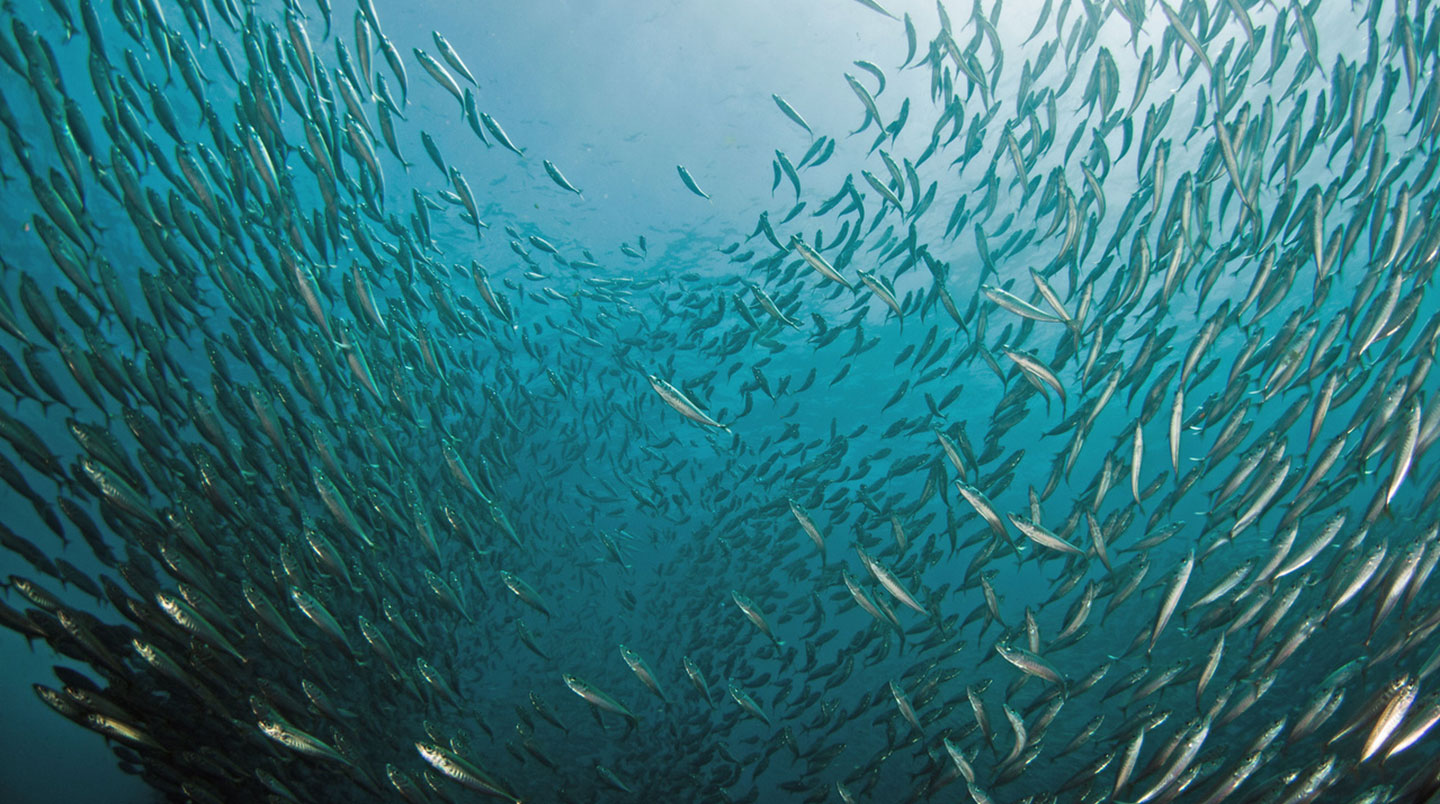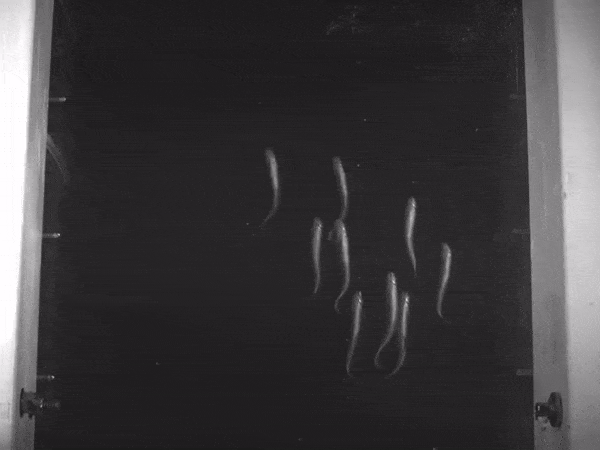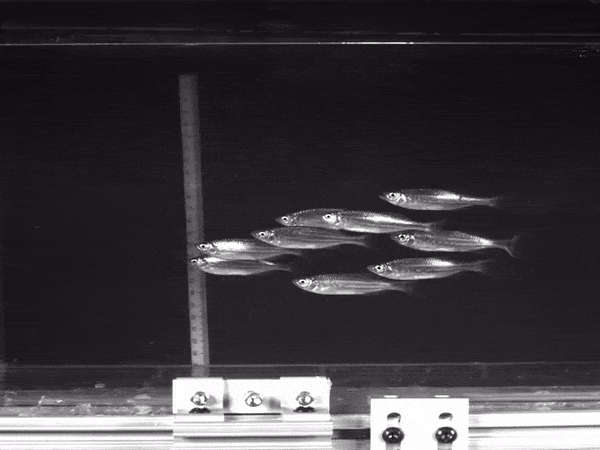Swimming in schools lets fish save lots of energy
Each tail flap uses less than half as much energy than swimming solo, new data show

Fish schools can have up to thousands of fish. This is a school of Jack mackerel, a small green and silvery fish, swimming around Ship Rock, Catalina Island in California.
Adam Obaza, NOAA Fisheries
Fish often travel in schools. Their mesmerizing action can appear choreographed and rehearsed as these schools bend and break in perfect timing. But there actually is no choreographer. Each fish navigates on its own. How and why each fish does what it does is what makes their schooling so puzzling to scientists. Now scientists think they have a clue as to why schooling is so common. It saves the fish energy — lots of energy.
Hundreds to thousands of fish can school together. Sometimes they move slowly and gracefully. Other times, they will dart quickly in one direction, then another.
A new study has compared the energy a fish uses as it swims. And moving in a school reduced the energy a fish used by more than half compared to when it swam alone, it found.
“The whole idea of measuring what it costs animals to move is an important one,” says George Lauder. He’s a fish biologist at Harvard University in Cambridge, Mass., and an author of the new study. Many physiologists have been looking into this for years, he notes. “This is the first paper, I think, that’s really measured that comprehensively.”
He and Yangfan Zhang, also at Harvard, shared their new findings January 19, in eLife.

Underwater sprints
Lauder and Zhang worked with giant danio (Devario aequipinnatus), small fish that love to swim.
Sometimes the team put eight at a time into a water tank shaped a bit like a racetrack. Other times, they just put in a single fish. The danio didn’t loop around the tank like race cars. Instead, they swam in one spot, like a runner on a treadmill, as a motor pushed the tank’s water around, creating a current.
As the fish swam, a special device called a respirometer (Res-pur-AH-meh-tur) measured how much oxygen they used. Oxygen helps to fuel muscles. For example, people who sprint use a lot of oxygen. Afterward, they often need a few minutes to recover and catch their breath. Here, the researchers used oxygen as a gauge of how much energy the fish used to swim in place.
To make them swim fast — like a sprinter — the researchers increased the speed of the circulating water current. When they slowed the water, the fish slowed too.
Schooling fish used less oxygen than when they swam alone. And, they took less time to recover from a sprint. In other words, they had an easier time “catching their breath” after schooling.
In all, the researchers repeated this experiment five times.
“It’s a beautiful, very careful examination of the energetics of a group of fish swimming,” says David Coughlin. He’s a fish biologist at Widener University in Chester, Pa.
By schooling, fish can save their energy for other important things, says Frank Fish. He works at West Chester University in Pennsylvania, where he studies the dynamics of motion in animals. For instance, if fish are young, they can put that energy into growth. As adults, they can use it to reproduce or to avoid predators.
Do you have a science question? We can help!
Submit your question here, and we might answer it an upcoming issue of Science News Explores
Inside the school
But, Fish notes, “That’s not the complete story.” From the new data, “we don’t know what’s happening inside the school.”
Researchers still lack solid evidence about why swimming in schools helps fish save energy. They do have a few ideas, however.
Flapping their tails from side to side against the water moves a fish forward. This causes the water behind the animal to spin. In one study, Fish observed three fish swimming together. When one swam between and behind the others, the fish in the back saved energy. But in a big school, Fish notes, it gets more complicated to understand the energy used in those movements.
If you put one fish in the middle of a school, there will be fish swimming to the left and right, above and below, in front of and behind it. That creates countless interactions, he says. And all that tail flapping means endless spiraling whirls of water, each colliding and crashing into another.
These whirls of water could make it easier for schooling fish to swim through, says Fish. This might even give them the ability to breathe a bit easier. But all this has yet to be proven.
“Now that we know there’s this great benefit,” says Coughlin. “Let’s figure out biomechanically — in terms of fluid dynamics — what are ways in which their interactions are helping them.”
Future fish robots
This new study could help engineers make fish robots, says study author Zhang. “Nothing we make moves through water as gracefully and effortlessly as fish,” he says. Instead of one big fish robot, they could make 20 small schooling fish robots to save energy. These robots could help count all the fish in the sea or find sources of pollution. Making machines that mimic living things is called biomimicry.
The results might also help researchers protect real fish. Most fish derive their heat from their environment. So their temperature is the same as the water around them. As water temps rise, such as with climate change, it takes more energy for fish to swim and live. By understanding the energy costs of fish movement, scientists can predict how climate change will impact their lives, says Coughlin.
“In the face of climate change,” says Coughlin, “we really want to understand things like [the energy needs] of fish.”









